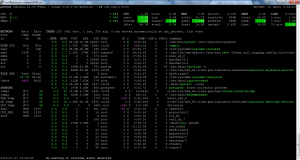Having a load balancer and multiple Peoplesoft VM’s at the Web and App layer with a clustered database server does not guarantee “seamless failover” for the end user – it all depends how it is all configured.
Here’s a nice example:
- Load Balancers (x2 actually)
- Multiple Weblogic servers
- Multiple Application servers
- Clustered DB server
The load balancer feeds the Weblogic servers with sessions and maintains “session stickiness” via a cookie. They in turn each know about the application servers so they can load balance across them too. All good? Nope.
Hmmm … the Weblogic servers are single server domains. With different session cookie names.
So, if a Weblogic server fails the load balancer will re-direct the session to another one. But that server is not even looking for the same session cookie name. End result for the users … the PeopleSoft login page.
But even if all the Weblogic servers did share the cookie name we have another problem – there is no session replication between the Weblogic servers as they were configured as single server domains. No Coherence, no wl_sessions table in a DB somewhere – nothing. End result for the users … the PeopleSoft login page.
